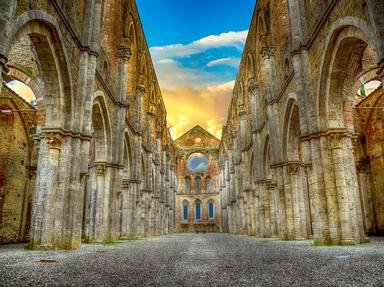Quiz Answer Key and Fun Facts
1. The first area of defense in any castle complex is the outer castle wall. By what term is this wall commonly known?
2. Which of the following statements most closely explains the importance of the moat in defending a castle?
3. Outside the walls of a castle, it is common to use booby traps to hamper enemy movements. What type of booby trap is also called a wolf hole?
4. The gatehouse of a castle might seem especially vulnerable, however, it is equipped with many safeguards. What is the name of the iron or wooden grated door that can be lowered when there is danger?
5. The roof of the gatehouse also has a feature which the French call a "meurtriere". What do we English call this feature?
6. If an intruder is able to get past the castle gatehouse, he then will enter an area that is between the outer wall and inner wall of the castle. What is this strongly fortified area called?
7. There are many built-in areas of the castle which allow archers to shoot arrows at attackers. Which of the following terms describes these slits in the walls?
8. What is the opening between the corbels on the battlements of a castle called? These openings allow defenders to drop stones on intruders.
9. Why are castle towers constructed in a round pattern?
10. Which of the following is a feature on a battlement that will protect castle defenders?
Source: Author
ponycargirl
This quiz was reviewed by FunTrivia editor
gtho4 before going online.
Any errors found in FunTrivia content are routinely corrected through our feedback system.

